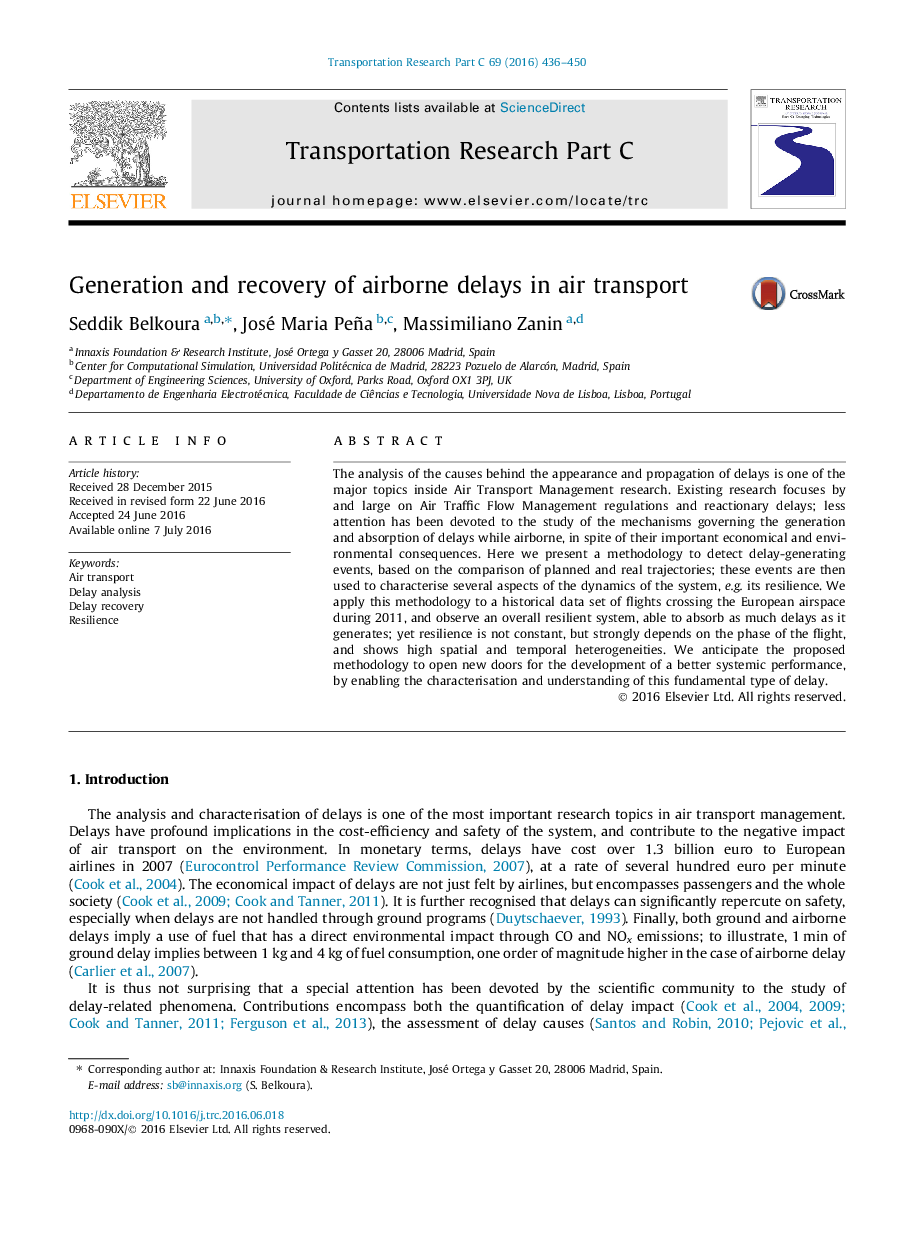| Article ID | Journal | Published Year | Pages | File Type |
|---|---|---|---|---|
| 524741 | Transportation Research Part C: Emerging Technologies | 2016 | 15 Pages |
•The economical impact of non-ATFM delays is expected to grow in the near future.•We propose a method for characterising en-route non-ATFM delays.•We define a metric to measure temporal and spatial airborne resilience.
The analysis of the causes behind the appearance and propagation of delays is one of the major topics inside Air Transport Management research. Existing research focuses by and large on Air Traffic Flow Management regulations and reactionary delays; less attention has been devoted to the study of the mechanisms governing the generation and absorption of delays while airborne, in spite of their important economical and environmental consequences. Here we present a methodology to detect delay-generating events, based on the comparison of planned and real trajectories; these events are then used to characterise several aspects of the dynamics of the system, e.g. its resilience. We apply this methodology to a historical data set of flights crossing the European airspace during 2011, and observe an overall resilient system, able to absorb as much delays as it generates; yet resilience is not constant, but strongly depends on the phase of the flight, and shows high spatial and temporal heterogeneities. We anticipate the proposed methodology to open new doors for the development of a better systemic performance, by enabling the characterisation and understanding of this fundamental type of delay.
